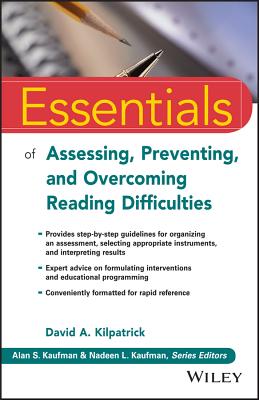
Ortiz, Samuel O.
The Cross-Battery Assessment Software System (X-BASS) 2.0 allows school psychologists and other assessment professionals access to efficient, expert analysis of cross-battery assessment findings. It integrates the Cross-Battery Assessment Data Management and Interpretive Assistant, Pattern of Strengths and Weaknesses Analyzer, and Culture-Language Interpretive Matrix into a single program, covering the latest revisions of major batteries, including the new WISC(R)-V, WJ IV(R), KTEA(tm)-3, ChAMP, UNIT-2, RIAS-2, FAR, FAM, WISC(R)-V Integrated, WJV-IV ECAD, CELF(R)-5, CTOPP-2, CAS2, and over 125 psychological batteries and 1,000 subtests, all classified according to CHC theory. Preprogrammed formulas conduct the analyses and display the results within the context of CHC theory, and allow you to customize the parameters to answer specific questions. Compatible with Windows and Mac OS X, the internal database, single-instance data entry, automatic and integrated summary graphing, guided PSW analysis, and much more make X-BASS an essential one-stop within-battery and Cross-Battery Assessment solution.
The Cross-Battery Assessment approach allows you to measure reliably a wider or more selective, in-depth range of cognitive abilities and processes and academic achievement than any single battery can measure. It provides the theoretical and psychometric foundation that permits accurate derivation of meaning from test scores, in full alignment with the most recent versions of the major batteries.
- Interpret and present cross-battery assessment findings efficiently and accurately
- Target analysis to answer specific questions for SLD evaluations
- Analyze empirical cognitive/academic relationships beyond relative magnitude of test scores
- Customize referral-relevant batteries by selecting from the X-BASS database of hundreds of cognitive, achievement, neuropsychological, and speech-language subtests
The Cross-Battery Assessment Software System (X-BASS) 2.0 gives you the accurate analysis you need, with the flexibility you want. 2.0 updates include:
Updated with 7 major new batteries, 80+ new subtests bringing X-BASS fully up to date with existing and popular tests in use today and provides greater functionality with a wider range of tests than ever before. Now includes Child and Adolescent Memory Profile (ChAMP), Universal Nonverbal Intelligence Test-Second Edition (UNIT-2), Reynolds Intellectual Assessment Scales-Second Edition (RIAS-2), Feifer Assessment of Reading (FAR), Feifer Assessment of Math (FAM), Wechsler Intelligence Scale for Children-Fifth Edition; Integrated (WISC-V Integrated), and Woodcock-Johnson IV Early Cognitive and Academic Development (WJ IV ECAD)
New clinical clusters on the WISC-V tab provide extended assessment capabilities so evaluators can examine a wider and more in depth range of cognitive constructs than are measured by the primary subtests and indexes on the WISC-V. These clusters provide the practitioner with greater flexibility in WISC-V use and interpretation.
Interpretive Summary Report tab performs an automatic analysis to determine the best global ability score for individuals who are English learners as well as those up are referred for SLD or ID evaluations. The summary report includes score tables, interpretive statements, and recommendations for follow up assessment. The report may be printed for easy inclusion with any other standard report.
Now runs in three modes providing different levels of help and guidance from "Beginner," to "Intermediate," to "Advanced." The Beginner mode provides guidance and assistance via pop-up messages. For users with more experience, the "Intermediate" mode suppresses most messages and displays only the typical informational, confirmational, and critical messages (those requiring user input to continue). "Advanced" mode suppresses nearly all messages and will only display those that require user input to continue program operation, pertain to interpretation of the PSW analysis, or are necessary to prevent accidental data deletion.
More help. Each tab now includes buttons for "Tab Help" and "Next Step," including step-by-step instruction on carrying out the activities to complete each tab. The "Next Step" button directs users to the logical next step and process for moving to the next task.






